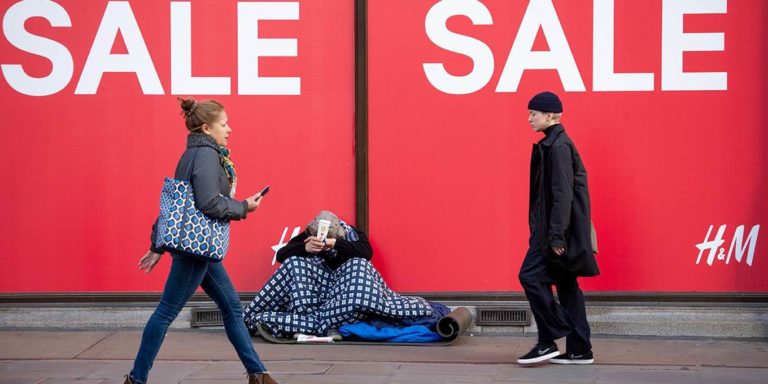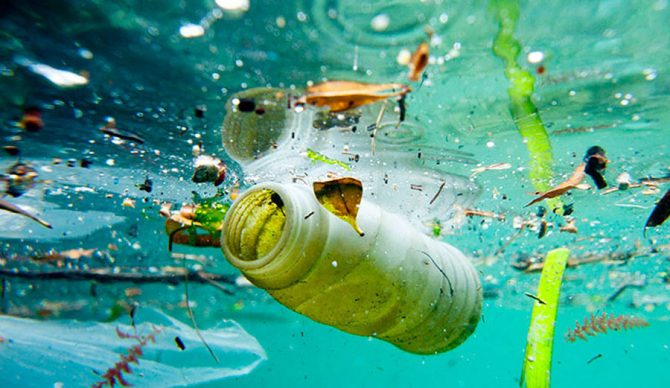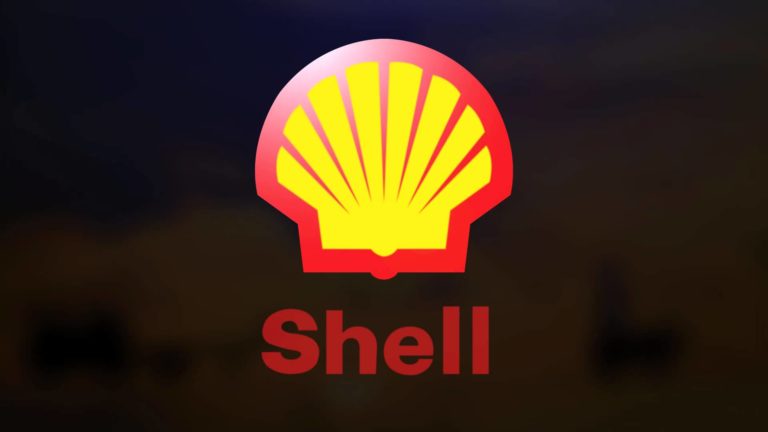espite a series of troubling new reports and studies, the world has yet to respond adequately to the threat posed by global warming. One reason is that policymakers have not made the connection between climate action and the social and political challenges their countries face.
PRINCETON/VIENNA – Climate scientists are sounding the alarm about global warming, but the world is not responding. In October, the United Nations Intergovernmental Panel on Climate Change warned of catastrophic risks to health, livelihoods, water supplies, and human security if global warming is not limited to 1.5° Celsius relative to the pre-industrial level, a target set by the 2015 Paris climate agreement. At the moment, however, we are on track for a 3°C increase.
hen, in November, the Fourth National Climate Assessment in the United States predicted that without swift action to reduce greenhouse-gas emissions, the US economy would suffer “substantial damages.” But President Donald Trump’s administration appears utterly unconcerned.
How is it possible that the slow-motion threat of climate devastation has not yet been halted?
Insights from the social sciences can help answer this question. In a recent report and companion book, the International Panel on Social Progress (IPSP), where we serve as committee members, analyzed social justice and equality across a number of sectors. One conclusion stands out: the only way to tackle the threat posed by climate change is by simultaneously addressing social and political challenges.
When ignored, social issues can trigger political turmoil, which can undermine the political will to fight climate change. For example, despite the implementation deal that was reached on December 15 in Poland, the Paris agreement remains in jeopardy, owing to political upheaval in many countries. In the US and Brazil, voters angry over socioeconomic issues elected leaders who are hostile to climate action. In France, protesters have taken to the streets to oppose a fuel-tax hike, not because they are against climate action per se, but because they are anxious about the high cost of living and frustrated with the elite’s perceived indifference. France’s experience echoes the difficulties that many developing countries have when trying to eliminate fossil-fuel subsidies.
These developments confirm what social scientists have long suspected: an environmentally-centered, technocratic push for climate action is destined to fail. But the IPSP’s recent work offers insights into how to achieve social progress and environmental sustainability concurrently.
On the socioeconomic front, inequalities can be curbed with policies that go beyond standard interventions, like wealth redistribution. It has been shown that people can be empowered with skills training and better health care, as well as with bargaining rights and appropriate regulation of labor contracts.
Addressing anxiety about the future of work is both necessary and feasible. Although there is no compelling evidence that automation will lead to widespread unemployment, job reshuffling will be disruptive. Ambitious “flexicurity” policies to ensure workers’ long-term security would help. With a combination of wage compression (closing the wage gap between jobs and industries), asset redistribution, and universal welfare, it is possible to accelerate innovation, empower workers, and promote growth and social mobility. Moreover, reforming the mission and the governance of corporations to better take account of all stakeholders would promote social justice and strengthen environmental stewardship.
Through such policies, governments would make economic democracy and empowerment a top priority. They could also promote economic efficiency with tax reforms that account for negative environmental and social externalities as well as monopoly profits and capital gains from real estate. Health care, education, and urban policy reforms can improve economic opportunities and yield important moral, civic, social, and ecological benefits.
Restoring trust in institutions also requires addressing democratic shortcomings in political systems and global governance. Corporate power and the influence of wealth in politics must be reined in; aligning antitrust legislation with twenty-first-century technologies is one place to start. Social media, once touted as a boon to democratization, may corrode the transparency and accountability on which democracy depends. Digital and traditional media should therefore be treated as common goods, and appropriate governance, involving civil society, must be set up to preserve content quality and producer independence from business interests and partisan influence.
The architecture of global governance mechanisms is still dominated by the richest countries. International organizations and their policies will not find their place and voice unless and until this power imbalance is ameliorated.
Around the world, experiments in democratic participation and deliberation held out the promise of more inclusive decision-making. This makes it possible to envision societies with less inequality and stronger environmental safeguards. With the right regulations and incentives, markets, corporate behavior, and new technologies can serve social progress and ecological goals. We are convinced that a better society is possible.
The authors of the IPSP’s report are not naive; we recognize that many of our contemporary institutions have been designed to address the problems of another era and must be reinvented. It is not easy to identify actors or organizations that are up to the task. But in the absence of a cohesive movement effecting change, loose coalitions of actors, political and environmental movements, business leaders, workers, philanthropists, minorities, and activists are capable of pursuing environmental and social causes in a decentralized fashion.
Taking action against climate change cannot be separated from social issues. In fact, simultaneously fighting climate change and promoting social justice makes it harder to ignore either one.














MILAN – About a decade ago, the Commission on Growth and Development (which I chaired) published a report that attempted to distill 20 years of research and experience in a wide range of countries into lessons for developing economies. Perhaps the most important lesson was that growth patterns that lack inclusiveness and fuel inequality generally fail.
The reason for this failure is not strictly economic. Those who are adversely affected by the means of development, together with those who lack sufficient opportunities to reap its benefits, become increasingly frustrated. This fuels social polarization, which can lead to political instability, gridlock, or short-sighted decision-making, with serious long-term consequences for economic performance.
There is no reason to believe that inclusiveness affects the sustainability of growth patterns only in developing countries, though the specific dynamics depend on a number of factors. For example, rising inequality is less likely to be politically and socially disruptive in a high-growth environment (think a 5-7% annual rate) than in a low- or no-growth environment, where the incomes and opportunities of a subset of the population are either stagnant or declining.
The latter dynamic is now playing out in France, with the “Yellow Vest” protests of the last month. The immediate cause of the protests was a new fuel tax. The added cost was not all that large (about $0.30 per gallon), but fuel prices in France were already among the highest in Europe (roughly $7 per gallon, including existing taxes).
Although such a tax might advance environmental objectives by bringing about a reduction in emissions, it raises international competitiveness issues. Moreover, as proposed, the tax (which has now been rescinded) was neither revenue-neutral nor intended to fund expenditures aimed at helping France’s struggling households, especially in rural areas and smaller cities.
In reality, the eruption of the Yellow Vest protests was less about the fuel tax than what its introduction represented: the government’s indifference to the plight of the middle class outside France’s largest urban centers. With job and income polarization having increased across all developed economies in recent decades, the unrest in France should serve as a wake-up call to others.
y most accounts, the adverse distributional features of growth patterns in developed economies began about 40 years ago, when labor’s share of national income began to decline. Later, developed economies’ labor-intensive manufacturing sectors began to face increased pressure from an increasingly competitive China and, more recently, automation.
For a time, growth and employment held up, obscuring the underlying job and income polarization. But when the 2008 global financial crisis erupted, growth collapsed, unemployment spiked, and banks that had been allowed to become too large to fail had to be bailed out to prevent a broader economic meltdown. This exposed far-reaching economic insecurity, while undermining trust and confidence in establishment leaders and institutions.
To be sure, France, like a number of other European countries, has its share of impediments to growth and employment, such as those rooted in the structure and regulation of labor markets. But any effort to address these issues must be coupled with measures that mitigate and eventually reverse the job and income polarization that has been fueling popular discontent and political instability.
So far, however, Europe has failed abysmally on this front – and paid a high price. In many countries, nationalist and anti-establishment political forces have gained ground. In the United Kingdom, widespread frustration with the status quo fueled the vote in 2016 to leave the EU, and similar sentiment is now undermining the French and German governments. In Italy, it contributed to the victory of a populist coalition government. At this point, it is difficult to discern viable solutions for deepening European integration, let alone the political leadership needed to implement them.
The situation is not much better in the United States. As in Europe, the gap between those in the middle and at the top of the income and wealth distribution – and between those in major cities and the rest – is growing rapidly. This contributed to voters’ rejection of establishment politicians, enabling the victory in 2016 of US President Donald Trump, who has since placed voter frustration in the service of enacting policies that may only exacerbate inequality.
In the longer term, persistent non-inclusive growth patterns can produce policy paralysis or swings from one relatively extreme policy agenda to another. Latin America, for example, has considerable experience with populist governments that pursue fiscally unsustainable agendas that favor distributional components over growth-enhancing investments. It also has considerable experience with subsequent abrupt shifts to extreme market-driven models that ignore the complementary roles that government and the private sector must play to sustain strong growth.
Greater political polarization has also resulted in an increasingly confrontational approach in international relations. This will hurt global growth by undermining the world’s ability to modify the rules governing trade, investment, and the movement of people and information. It will also hamper the world’s ability to address longer-term challenges like climate change and labor-market reform.
But to go back to the beginning, the main lessons from experience in developing and now developed economies are that sustainability in the broad sense and inclusiveness are inextricably linked. Moreover, large-scale failures of inclusion derail reforms and investments that sustain longer-term growth. And economic and social progress should be pursued effectively – not with a simple list of policies and reforms, but with a strategy and an agenda that involves careful sequencing and pacing of reforms and devotes more than passing attention to the distributional consequences.
The hard part of constructing inclusive growth strategies is not knowing where you want to end up so much as figuring out how to get there. And it ishard, which is why leadership and policymaking skill play a crucial role.